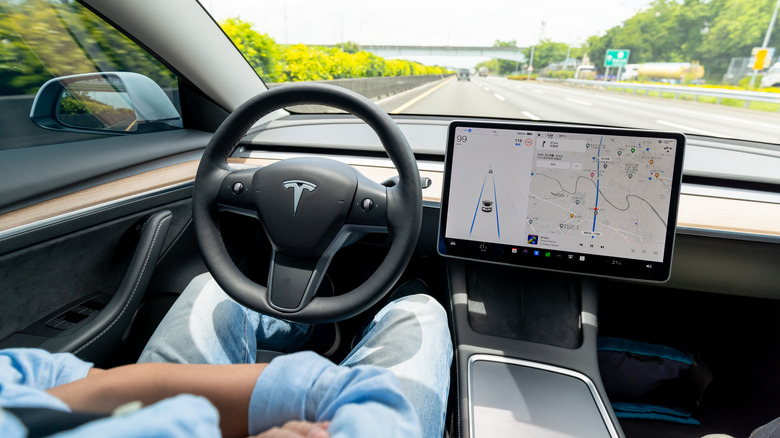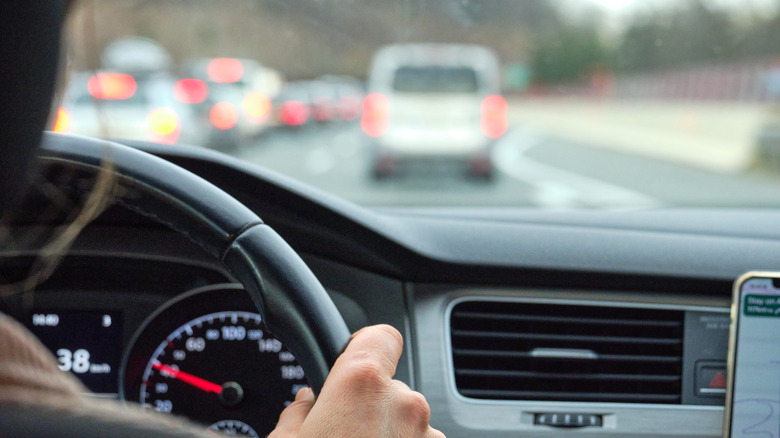California Is Cracking Down On People Using Hacks To Create Their Own 'Self-Driving' Cars
We still have a long way to go unit self-driving cars become the norm. While there are many companies exploring this technology, autonomous driving has hit something of a roadblock after a period of steady progress. With that said, some drivers have taken matters into their own hands in the hope of achieving something similar to self-driving vehicles. This has manifested in the form of "defeat devices," which trick hardware like Tesla's Autopilot or Ford's BlueCruise into handling road tasks like lane centering and adaptive cruise control without human input. Devices like steering wheel weights and camera blockers simulate human engagement, bypassing these cars' driver monitoring systems (DMS).
Considering the dangers of trying to turn non-autonomous cars into supposed self-driving vehicles, governmental bodies have started trying to put a stop to these hacks. California Senate Bill 1313, passed in late September 2025, makes equipping vehicles "with a device that is specifically designed for, marketed for, or being used for, neutralizing, disabling, or otherwise interfering with a driver monitoring system" illegal. The bill also cracks down on the ownership, manufacturing, advertising, and distribution of such devices.
The bill specifically refers to the use of these devices on Level 2 self-driving systems, including those mentioned previously. Level 2 systems have some automation, but they aren't fully autonomous and require full-time supervision. That said, while this does sound like a set-in-stone list of rules for drivers to adhere to, there are some small exceptions to the bill.
Where Bill 1313 makes exceptions
On the whole, this new California law is designed to keep drivers safe. It aims to prevent folks from dangerously tricking their vehicle's DMS in pursuit of half-baked autonomous driving, keeping them and other motorists safe. With that said, the price for violating this law is surprisingly tame, with only an infraction coming to those who opt to keep selling, using, and producing these defeat devices. Additionally, it should be noted that it does leave some wiggle room for such elements to be used when behind the wheel, albeit in specific situations with decreased chances of danger.
The biggest exception to this rule is situations where these devices are needed for the sake of car repair. Senate Bill 1313 specifically cites that it can't be enforced should it prohibit "conducting motor vehicle diagnostic services, repairs, or enhancements consistent with the original equipment manufacturer's safety standards." This includes fixing manufacturer defects, updating DMS, and more. It also makes an exception for the Americans with Disabilities Act of 1990. Essentially, if such devices are needed so that someone's physical disability doesn't put them in danger behind the wheel, they're allowed. These are narrow exceptions, but this is surely needed to prevent drivers from abusing defeat devices.
These attempts to "hack" vehicles are no joke, hence why California has taken action to prevent them from becoming a pervasive hazard. This may disappoint many, specifically those who want a self-driving car, but they'll just have to wait for such tech to reach consumer levels. For now, all they can do is hop behind the wheel of one of the cars that are currently the closest thing to self-driving.

